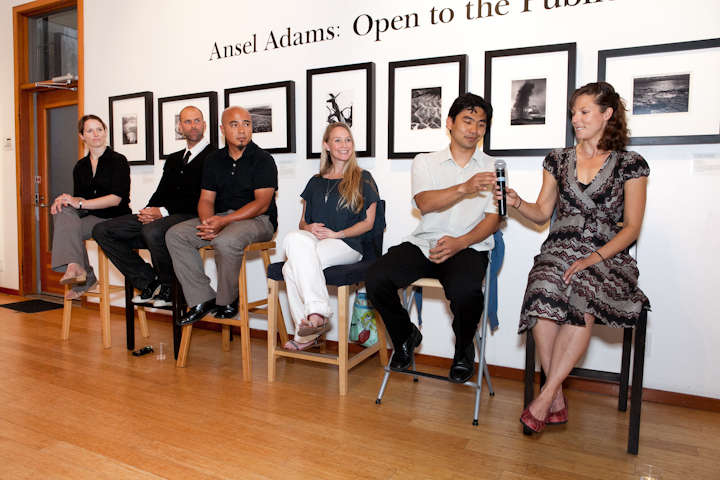May 17, 2012


Susan Gottlieb, co-owner of the G2 Gallery and an avid environmentalist, experienced the emotional push behind Laurel Serieys’ work when, in December of 2011, she found a deceased bobcat in her garden. The unfortunate death of this creature brought Serieys’ commitment to science into union with the resources of the G2 Gallery. A partnership formed to educate the public on about something previously unknown outside of academia: across the Santa Monica Mountains large cats were and are dying. (Photo by Simone Paz Photography)
<![CDATA[
[nggallery id=206 template=carousel images=8][imagebrowser id=206]
By Courtney Hayden
May 17, 2012
Editor’s Note: The following is part of SCGH’s Young Environmentalists series featuring profiles of young people who are doing groundbreaking sustainability work.
LOS ANGELES — Laurel Serieys is a reserved woman. Soft in speech and radiating intelligence, being a Ph.D. candidate at UCLA fits her as naturally as breathing. She is engaged in community education and public outreach, but she is adamantly not an activist. Serieys is scientist. She follows the facts, and her synthesis of conservation biology and scientific inquiry. It just so happens that the facts are alarming and in desperate need of attention.
Susan Gottlieb, co-owner of the G2 Gallery and an avid environmentalist, experienced the emotional pull behind Serieys’ work when, in December of 2011, she found a dead bobcat in her garden. The unfortunate death of this creature brought Serieys’ commitment to science into union with the resources of the G2 Gallery. A partnership formed to educate the public about something previously unknown outside of academia: across the Santa Monica Mountains, large cats have been and are dying.
Serieys’ was not shocked by the cat’s death. She had already made a commitment to facing the disturbing reality of suffering and deaths among large feline species in urban areas, including Los Angeles. Through research and education, she established herself as an expert on anticoagulant exposure in bobcat populations within Southern California. Today, she is dedicated to finding a scientifically proven link between the painful deaths caused by exposure and household use of rat poison.
Serieys worked with the National Park Service in the Angeles Forest outside of Thousand Oaks, California, where she conducted innumerable hours of lab-based research. Through this work, she built an understanding of the impacts of anticoagulants on coyotes and other large carnivores. These species were already well-studied, and this work provided Serieys a basis for investigating impacts in feline populations. In her current research, Serieys employs a variety of methods to track large cat populations, including trapping, disease and scat surveys, health assessments, anticoagulant surveys, radio-telemetry, and genetic analysis.
Serieys cannot ignore the startling facts being illuminated by her research, or the rising death toll in large cat populations. She is still in the process of incontrovertibly proving the link between rat poison in the environment and the deaths of the animals she fell in love with as a child. She strongly believes, and is voicing publically, that the current evidence is compelling enough to warrant suspending household use of the poison.
“I see what [rat poison] does to wildlife, and it is heart-breaking,” says Serieys, “People either don’t know or choose to ignore the consequences; I can’t.”
Serieys is fighting the lack of awareness in communities surrounding the open spaces she studies. She is reaching out by creating a Web site with valuable information on how anticoagulant exposure is harming animals, and how Southern Californians can help.
For Serieys, who is in her 30s, The Young Environmentalist Symposium at the G2 Gallery was another step towards educating the public on the importance of this scientific inquiry. During her time on the panel, Serieys spoke eloquently about the struggles large cat populations are facing, and she urged attendees to stop using rat poison in their homes.
Living an environmentally-friendly lifestyle means preserving and protecting natural resources and wildlife. Scientific information being provided by young environmentalists like Laurel Serieys is invaluable to a sustainable future. Sierra Club Green Home applauds Serieys’ work, along with the work of all young researchers who use their talents to help the environment.
For related articles, see:
Rainforest Hero Leaves Brazil for Los Angeles
Safe Indoor Pest Control
© 2012 SCGH, LLC.
]]>